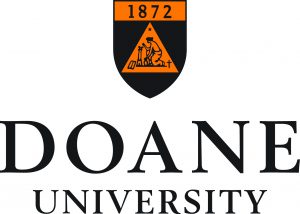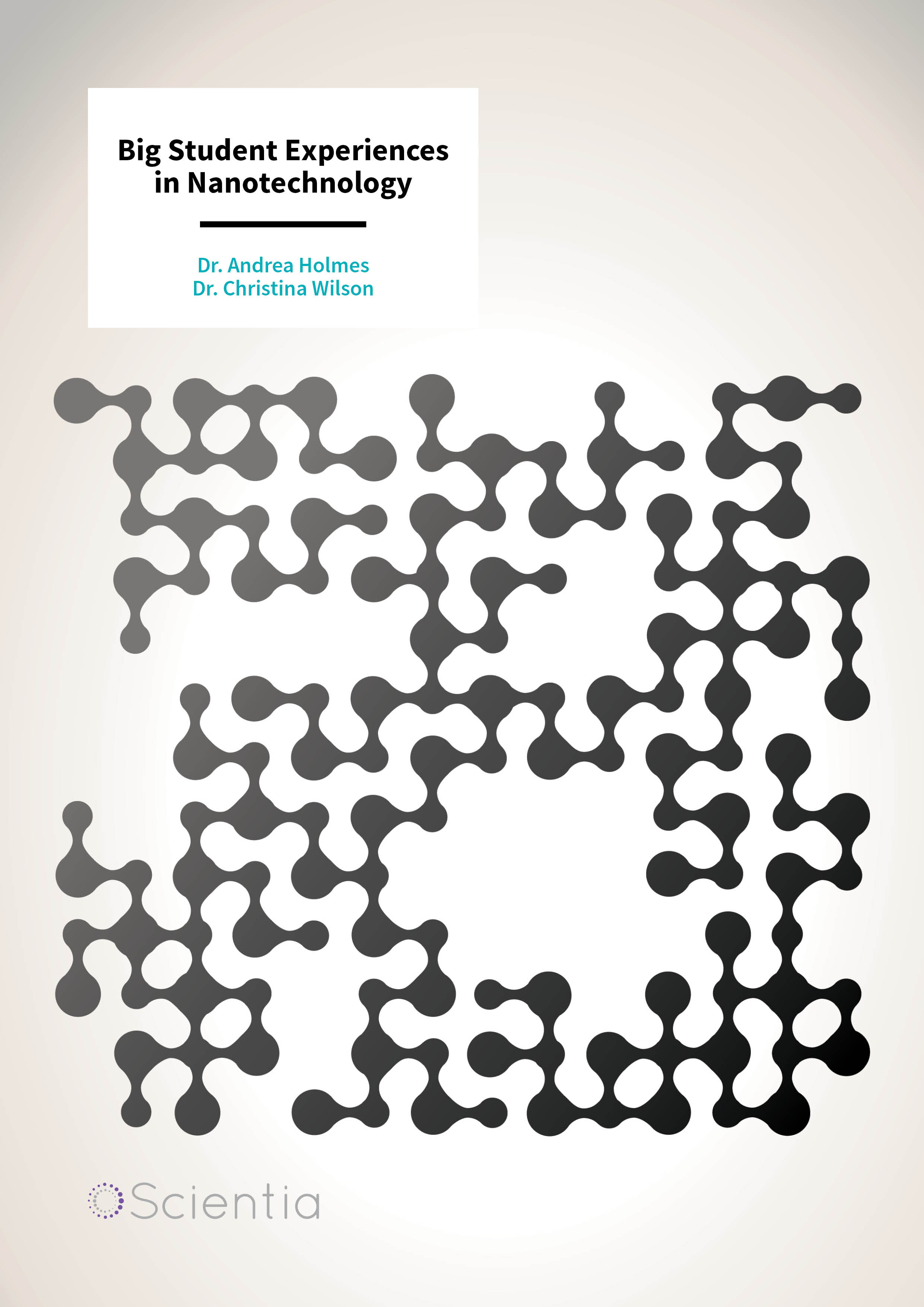Dr. Andrea Holmes | Dr. Christina Wilson – Big Student Experiences in Nanotechnology
Nanotechnology is poised to be one of the most critical technologies of the near future, yet exposure to nanotechnology techniques is limited for many college students. Dr. Andrea Holmes and Dr. Christina Wilson of Doane University in Crete, Nebraska, are partnering with the Karlsruhe Institute of Technology in Karlsruhe, Germany, to provide students with unparalleled experiences in nanotechnology research for biomedical applications.
Growing up in Germany, Dr. Andrea Holmes of Doane University never imagined finding herself living in the corn fields of Nebraska, but after completing her PhD at New York University and a post-doctoral position at Columbia University, she found herself looking for new opportunities and a change of pace in her environment. She applied to teach at Doane University, a small private university in southern Nebraska surrounded by corn fields.
Years later, Dr. Holmes has found a wonderful home and community at Doane and is using her skills in nanotechnology research and international roots to provide incredible research and educational opportunities to her students. Through a partnership with the Karlsruhe Institute of Technology (KIT) in Karlsruhe, Germany, she has secured National Science Foundation funding for a program that provides International Research Experience for Students, that covers travel and expenses for undergraduates to perform collaborative research abroad.
Through this program, Dr. Holmes has helped many Doane students expand their horizons while working on projects related to her specialties in nanotechnology, biosensing, and biofilm research. Her students will spend three summers conducting research at KIT in Germany, and after their first year are already well on their way to successful research careers of their own.
The Future of Detection
A major challenge in many fields is the accurate detection and identification of substances outside the laboratory. From identifying water contamination in streams, to locating explosives in war zones, to testing for performance enhancing drugs, there are many industries that could benefit from the ability to perform substance detection, on site, in real time. The major thrust of Dr. Holmes’ work, and her students’ international research, is a nanoprinted sensor called the DETECHIP®, short for detection chip.
‘We have developed new colorimetric sensor tests that are small and portable to detect drugs of abuse, pesticides, steroids, explosives, and warfare agents like nerve gases.’
Utilising state of the art nanoprinting of micropatterns, Dr. Holmes and her team have developed a novel chip that can be adapted to multiple substances, printed on many types of surfaces, that provides real time results in the form of colour changes that can be distinguished and parsed by a computer to identify the substance identity. Dr. Holmes describes how they have, ‘developed new colorimetric sensor tests that are small and portable to detect drugs of abuse, pesticides, steroids, explosives, warfare agents like nerve gases, and biological molecules that play a significant role in bacterial infections.’
During their stay at KIT in Germany, Dr. Holmes’ Doane students worked with nanotechnology experts’ Dr. Michael Hirtz and Dr. Pavel Levkin on projects aimed at both making the chips smaller and increasing the range of materials that they can be printed on. In addition, students are helping Dr. Holmes and the KIT researchers to identify imaging technologies that could be used to read the DETECHIP® in field situations – so that this incredible technology can find its way out of the lab and into the hands of doctors, soldiers, scientists, and specialists working in countless different conditions and situations.
The Doane students recently completed their first summer of the program at KIT and the feedback has been overwhelmingly positive. These students from a remote area of the American Midwest are gaining broader cultural exposure while learning valuable skills in science and technology that they can carry forward in their careers.
Many have already expanded the scope of their intended research projects, as well as produced publications and presented at national science conferences. Their work is already helping Dr. Holmes and the researchers at KIT to improve and expand DETECHIP® capabilities and is anticipated to yield even more impressive results as the program continues.
New Frontiers in Biofilm Research
Dr. Holmes’ incredible DETECHIP® sensors may also be used to detect the faint signatures of a biofilm-related infection. The gradual accumulation of multiple species of bacteria and other microbes on a surface, creating a layer known as a biofilm, can create significant challenges in multiple aspects of society. Biofilms are communities of diverse microbes that occur on a variety of surfaces, from the algal slime on the hulls of boats, to infections on medical implants, to the plaque on your teeth.
While the types of microbes in these biofilm communities may vary greatly, what they share in common is a diverse blend of organisms each with unique strengths and weaknesses contributing to the community, often making them antibiotic resistant, adaptable, and impervious to many standard prevention techniques. These masses of single-celled organisms often take on unique traits and abilities that none of the individual species possess on their own, such as the ability to convert toxic chemicals to safe compounds in waste treatment plants or to corrode metal in industrial settings.

Biofilms thrive in wet environments, so surfaces that are constantly under water, such as marine equipment, frequently accumulate biofilm masses that can interfere with functionality. Coatings of biofilm block fishing nets, slow down boats, and serve as reservoirs for aquatic disease, costing fishing, aquaculture, and shipping industries millions of dollars every year. Biofilms are also a major problem in many hospitals, where they can accumulate on equipment and medical devices, presenting major health challenges when a patient acquires an antibiotic resistant biofilm-related infection.
‘Our research involves surface modifications to create anti-fouling materials that could be used on medical implants to prevent biofilm infections during surgery or to prevent biofouling on marine ships.’
Biofilms are among Dr. Holmes’ and her team’s chief research interests – she specialises in using nanotechnology to create anti-fouling surfaces and materials that are resistant to the accumulation of biofilms by design. ‘Biofilm infections are one of the worst antibiotic resistant hospital acquired infections,’ she describes. ‘Our research involves surface modifications to create anti-fouling materials that could be used on medical implants to prevent biofilm infections during surgery or to prevent biofouling on marine ships.’
Biofilms start when a few microbes find a way to attach to a surface in a moist location, and more single-celled organisms of different species gradually join. Surfaces that prevent bacteria from binding to them are able to stay biofilm free, even in conditions that normally allow biofilms to flourish. The ability to control the attachment of biofilms to surfaces can be used to prevent unwanted biofilm-related infections and to harness the positive characteristics of biofilms, such as using them to clean up contaminated soil and water or bioremediation.
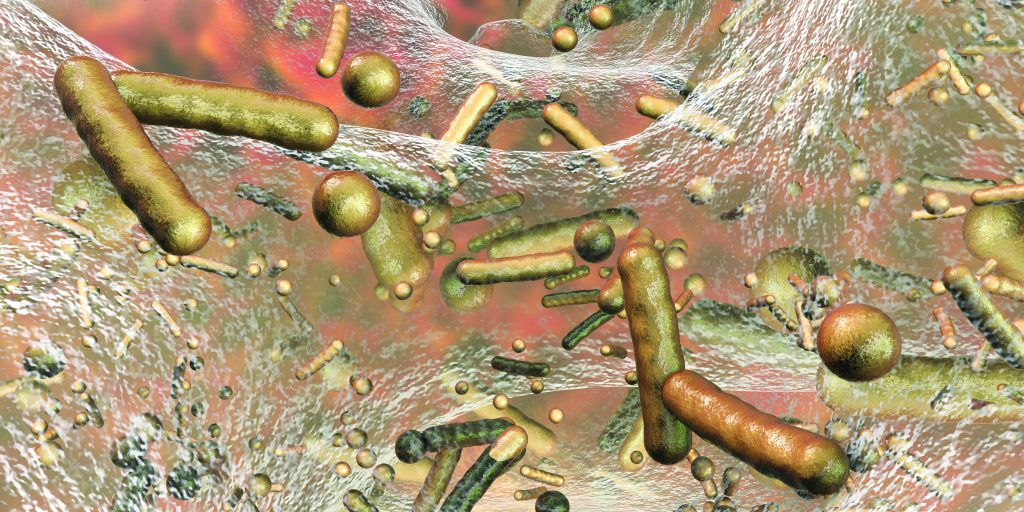
By finding ways to make these surfaces easier and less expensive to produce, Dr. Holmes and her team including research scientist Dr. Christina Wilson, are working to help make the world a cleaner, safer place.
In the summer of 2017, Dr. Holmes’ undergraduate researchers left Doane University to spend eight weeks in Germany at KIT working on technologies to help scientists better study biofilms under the mentorship of Dr. Wilson. The students used micro and nanolithography techniques to create micropatterned surfaces on a microscope slide – wells of the pattern attract water and facilitate biofilm growth, while the dividing lines between wells repel water and are inhospitable to bacteria.
These microarrays allow for the growth of hundreds of unique biofilms on a single slide, making it easier for researchers to study these fascinating bacterial communities. This technology can be used to help scientists advance our understanding of how biofilm communities function and how they develop their unique properties, such as antibiotic resistance.
Dr. Holmes’ team hopes that this technology will lead to advancements in treatments for biofilms that could help transform healthcare, and potentially the ability to harness the unique properties of biofilms for applications that benefit humankind. By learning to control the activities of biofilms, it could be possible to utilise them to serve human needs rather than them serving as a nuisance.
Micropatterns for Major Results
Micropatterned surfaces are used in many biological and medical applications, such as screening for proteins or antibodies that might indicate the presence of a disease. Nanoscale patterns are designed to specifically adhere to a unique part of a biological compound, however these binding sites are often susceptible to getting clogged up by random fragments of proteins, reducing their efficiency and accuracy, sometimes leading to ambiguous results.
Typically, a mechanism has to be employed to keep the wrong materials from adhering to the micropattern, so that observers can be confident that the desired compounds are bound if they are present. In research applications, the most common way to prevent non-specific protein binding is by using bovine serum albumin (BSA).
BSA is a special protein from cow blood serum which can be suspended into a sticky fluid that effectively blocks any surface sites that are amenable to non-specific binding, thereby encouraging the desired protein to bind at the intended sites and not at the non-specific sites. Recently, through collaborating with scientists at KIT, Dr. Holmes and her students developed a method of printing micropatterns that are highly attractive to the desired protein on coated surfaces that can repel erroneous proteins, minimising non-specific binding without the use of BSA.
In the future, these micropatterns can be used to pull out a desired protein accurately and efficiently even from biological fluids containing many complex and varied proteins. This technology has the potential to revolutionise biomedical research and testing by increasing both the ease of use and accuracy of many common screens.
‘We want to study how biofilm can be used in bioremediation, such as in cleaning wastewater that contains pesticides that are prevalent in Nebraska and the Midwest, such as Atrazine which is suspected to cause cancer.’
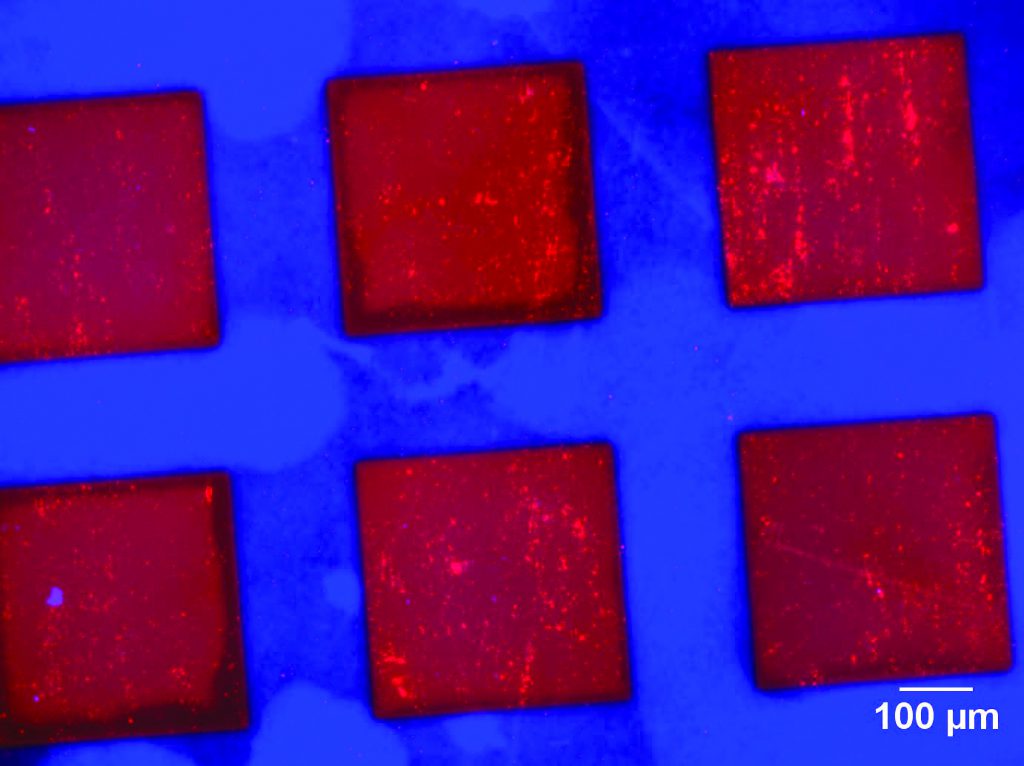
A Healthier Future
Dr. Holmes’ and her team’s goals for the future of her nanotechnology research are ambitious and could transform many aspects of modern life. She explains, ‘for the sensor project, a smart phone application needs to be developed so that the sensors can be taken in the field by anybody without much training, and one can take an image with a smart phone, upload it, and the app will provide the identity of the unknown substance.’
With this technology, it would be possible for researchers, military personnel, and environmental workers, to more easily obtain accurate substance identification miles from a laboratory, enabling real time informed decision making for people in the field. Dr. Holmes, Dr. Wilson and their team of students also hope to build upon their successes in accelerating biofilm research, to learn how to harness the unique abilities of biofilm for the greater good.
Dr. Holmes says, ‘we want to study how biofilm can be used in bioremediation, such as in cleaning wastewater that contains pesticides that are prevalent in Nebraska and the Midwest, such as Atrazine which is suspected to cause cancer.’ She hopes that by learning more about how biofilms form and develop their unique properties, she will be able to put them to use cleaning up the world’s water supply and restoring clean, safe drinking water to agricultural communities, where water sources are often contaminated with pesticides and other chemicals that are suspected to have dangerous long-term health effects.
Through the marriage of nanotechnology and biology, Dr. Andrea Holmes and her team are engaged in research that protects human health by detecting toxic chemicals, providing safer hospitals, and developing technologies to improve the environment. They are working to ensure that this research will carry into the future by providing transformative educational and training experiences for the next generation of world class scientists at Doane University.
Meet the researchers
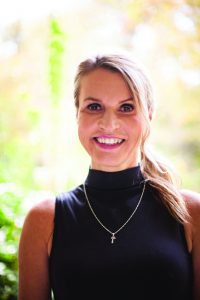
Dr. Andrea Holmes
Department of Chemistry
Doane University
Crete, NE
USA
Andrea Holmes studied biology at the University of North Florida and went on to study Organic Chemistry, earning a PhD from New York University in 2004. She continued on to post-doctoral positions at Columbia University, before joining the faculty at Doane University in Crete, Nebraska in 2005. Dr. Holmes currently serves as a Professor of Chemistry at Doane, where she has mentored numerous undergraduate and graduate students in applying nanotechnology techniques to biomedical and chemical challenges. She received the prestigious Early Career Award from the National Science Foundation from 2008–2014, funding from the National Science Foundation, Department of Defense, and in 2015 received the Henry Dreyfus Teacher-Scholar Award, all in honour of her exemplary teaching work at Doane University.
CONTACT
E: andrea.holmes@doane.edu
T: (+1) 402 826 6762
W: http://www.doane.edu/andrea-holmes
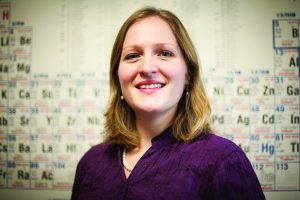
Dr. Christina Wilson
Department of Chemistry
Doane University
Crete, NE
USA
Christina Wilson studied Chemical Engineering at Kansas State University and went on to obtain her PhD in Chemical and Biomolecular Engineering at the University of Nebraska-Lincoln in 2016. She has supported the International Research Experience for Undergraduate Students (IRES) program as an undergraduate mentor at the Karlsruhe Institute of Technology. She is currently pursuing post-doctoral research with the Centre for Undergraduate Research of Biofilms under the mentorship of Dr. Andrea Holmes at Doane University.
CONTACT
E: christina.wilson@doane.edu
T: (+1) 402 826 8325~
W: https://www.doane.edu/christina-wilson
FUNDING
US National Science Foundation
US National Institutes of Health
US Department of Defense
Camille and Henry Dreyfus Foundation
REFERENCES
U Bog, A Santos Pereira, SL Mueller, S Havenridge, V Parrillo, M Bruns, AE Holmes, C Rodriguez-Emmenegger, H Fuchs, and M Hirtz, Clickable Antifouling Polymer Brushes for Polymer Pen Lithography, Applied Materials & Interfaces, 2017, 9, 12109−12117.

